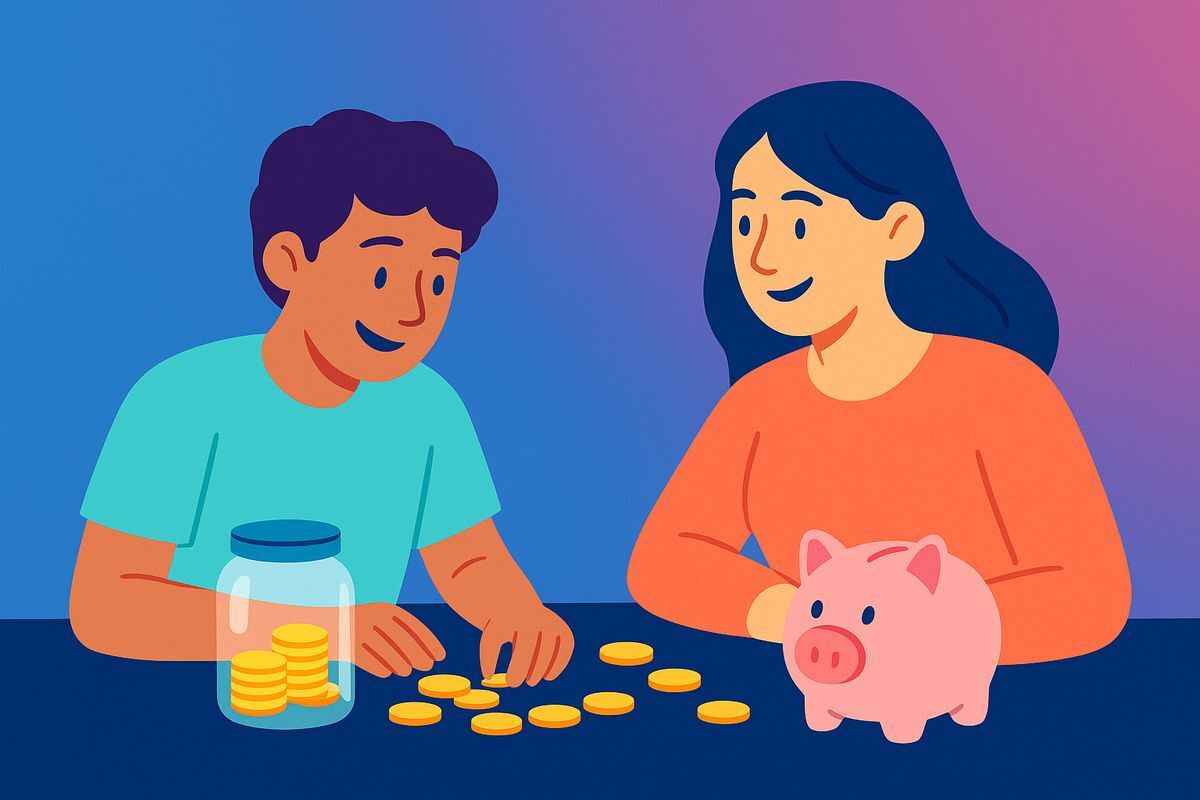Money lessons usually start with piggy banks and pocket‑money budgets. We make chore charts, talk about wants versus needs, and hope our teens will absorb the basics of saving. Yet research shows that financial literacy programmes often fail because they ignore the biggest battlefield: the brain. A recent World Economic Forum piece notes that only 40% of adults in developing economies save in a financial account—not because they lack access to banks, but because their relationship with money is shaped by emotions and beliefs rather than spreadsheets. If we want to raise money‑savvy teenagers, we need to go deeper than the math.
Neuroscientists describe money decisions as a tug‑of‑war between the emotional brain (the “chimp”), the programmed beliefs we inherit (“scripts”), and the conscious, rational brain. The emotional brain seeks safety, belonging and instant gratification; it’s why your teen blows their allowance on the latest gadget or designer trainers. The programmed brain holds stories from childhood—maybe your family always struggled, or maybe you grew up hearing that talking about money is rude. Only when the rational brain can recognise those urges does it have a chance of winning. That’s why budgeting lessons stick only when teens understand why they want to save in the first place.
So how do we teach this? Behavioural scientists suggest three components for lasting money habits. First, there needs to be a strong emotional driver—a painful memory (debt) or a meaningful goal (saving for university fees) that makes the sacrifice feel worthwhile. Second, we have to talk about feelings. Ask your teen what they feel when they spend or save. Do they shop to fit in? Do they worry there will never be enough? Naming these beliefs is how we rewrite them. Finally, we need practical plans: simple budgeting tools, clear savings targets and regular check‑ins.
Organisations that combine these elements have seen remarkable results. In South Africa’s Taking Care of Business programme, participants’ savings rates jumped from 17% to 77% because the curriculum focused on identity, emotions and community support, not just numbers. At home, we can create our own mini‑version. Instead of simply handing over pocket money, let your teen set a goal with emotional meaning—saving for a concert, a trip or a future start‑up. Talk openly about your own money mistakes and the stories you grew up with. Encourage them to track their triggers: do they spend more when they’re stressed or scrolling social media? When they inevitably misjudge, replace shame with curiosity: what feeling were they chasing?
Our parents may have told us to hide cash under the mattress; our job is to help our kids build a healthy mindset about digital wallets and real‑world values. Teaching teens about money isn’t just about pennies and pounds—it’s about helping them understand themselves. When they learn to recognise the “chimp” voice and listen to their goals, the allowance jar becomes a training ground for a lifetime of financial resilience.
Sources:
* World Economic Forum – “Real financial literacy goes beyond budgets to behaviour” (1 October 2025)
ليه عادات ابنك في الفلوس بتبدأ من دماغه، مش من المحفظة
دروس الفلوس دايمًا بتبدأ بحصالة وحساب مصروف. إحنا بنعمل جدول مهام ونتكلم عن الفرق بين الاحتياجات والرغبات، وبنتمنا إن ولادنا يستوعبوا أساسيات الادخار. لكن الأبحاث بتقول إن برامج التوعية المالية كتير بتفشل لأنها بتتجاهل أهم ساحة معركة: المخ. مقال حديث من المنتدى الاقتصادي العالمي بيقول إن بس ٤٠٪ من البالغين في الاقتصادات النامية بيوفروا في حساب بنكي – مش بسبب عدم وجود بنوك، لكن لأن علاقتهم بالفلوس متشكلة بالمشاعر والمعتقدات أكتر من الجداول. لو عايزين نربي مراهقين فاهمين قيمة الفلوس، لازم نغوص أعمق من المسألة الحسابية.
علم الأعصاب بيقول إن قرارات الفلوس عبارة عن شد وجذب بين المخ العاطفي (اللي بيسموه “القرد”)، والمعتقدات الموروثة اللي اتعلمناها واحنا صغيرين، والمخ الواعي والمنطقي. المخ العاطفي عايز أمان وانتماء ومتعة فورية؛ علشان كده ابنك ممكن يخلص مصروفه على آخر صيحة في الجيمز أو الترند. المخ المبرمج فيه حكايات من الطفولة – يمكن عيلتك كانت دايمًا مضغوطة ماديًا، أو كنت بتسمع إن الكلام عن الفلوس عيب. المخ الواعي بس يقدر يسيطر لما يفهم الدوافع دي. علشان كده دروس الميزانية بتثبت بس لما ولادنا يفهموا ليه عايزين يوفروا أصلاً.
طيب نعلّمهم إزاي؟ العلماء بيقولوا إن فيه تلات عناصر لعادات مالية تدوم. أولاً لازم يكون فيه دافع عاطفي قوي – ذكرى مؤلمة (دين) أو هدف مهم (مصروف الجامعة) يخلي التضحية تستاهل. تانيًا، لازم نتكلم عن المشاعر. اسأل ابنك أو بنتك بيحسوا إيه لما يصرفوا أو يوفروا. هل بيشتروا علشان يحسوا إنهم زي صحابهم؟ هل خايفين مافيش فلوس كفاية؟ تسمية المشاعر دي هي أول خطوة علشان نغيرها. وأخيرًا، محتاجين خطة عملية: أدوات بسيطة للميزانية، أهداف ادخار واضحة ومراجعات منتظمة.
المنظمات اللي بتدمج العناصر دي بتحقق نتائج مبهرة. في برنامج “تيكينج كير أوف بيزنس” في جنوب أفريقيا، نسبة الناس اللي بتوفر زادت من ١٧٪ لـ٧٧٪ لأن المنهج ركز على الهوية والمشاعر والدعم المجتمعي مش بس الأرقام. في البيت، نقدر نعمل نسخة مصغرة. بدل ما تدي ابنك مصروف وخلاص، خليه يحدد هدف ليه معنى عنده – رحلة مع أصحابه، أو مشروع مستقبلي. احكي له عن أخطائك مع الفلوس والحكايات اللي كبرت عليها. شجعهم يلاحظوا المحفزات: هل بيصرفوا أكتر لما يكونوا مضايقين أو وهم بيقلبوا في السوشيال؟ ولما يغلطوا، بدل ما نوبخهم، نسأل: كانوا بيدوروا على إحساس إيه؟
أهالينا علمونا نحوش المصروف تحت المرتبة؛ دورنا دلوقتي نساعد ولادنا يبنوا عقلية صحية عن المحافظ الرقمية والقيم الحقيقية. تعليم المراهقين عن الفلوس مش بس عن الجنيهات والقرش – ده عن فهمهم لنفسهم. لما يتعلموا يميزوا صوت “القرد” ويسمعوا لأهدافهم، هتبقى حصالة المصروف ملعب لتكوين مرونة مالية طول العمر.
المصادر:
* المنتدى الاقتصادي العالمي – “التوعية المالية الحقيقية بتتخطى الميزانيات للسلوك” (١ أكتوبر ٢٠٢٥)







Leave a Reply
You must be logged in to post a comment.